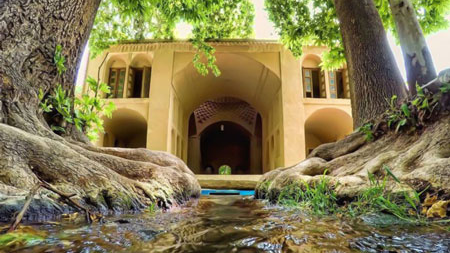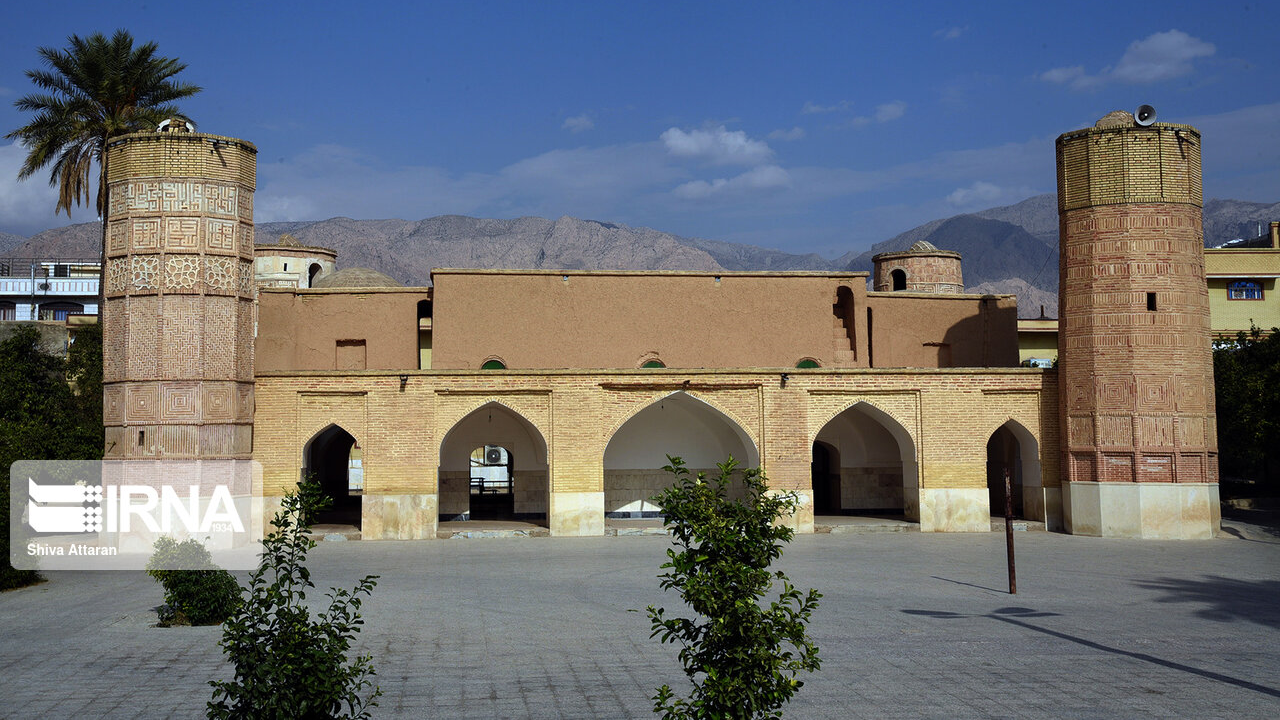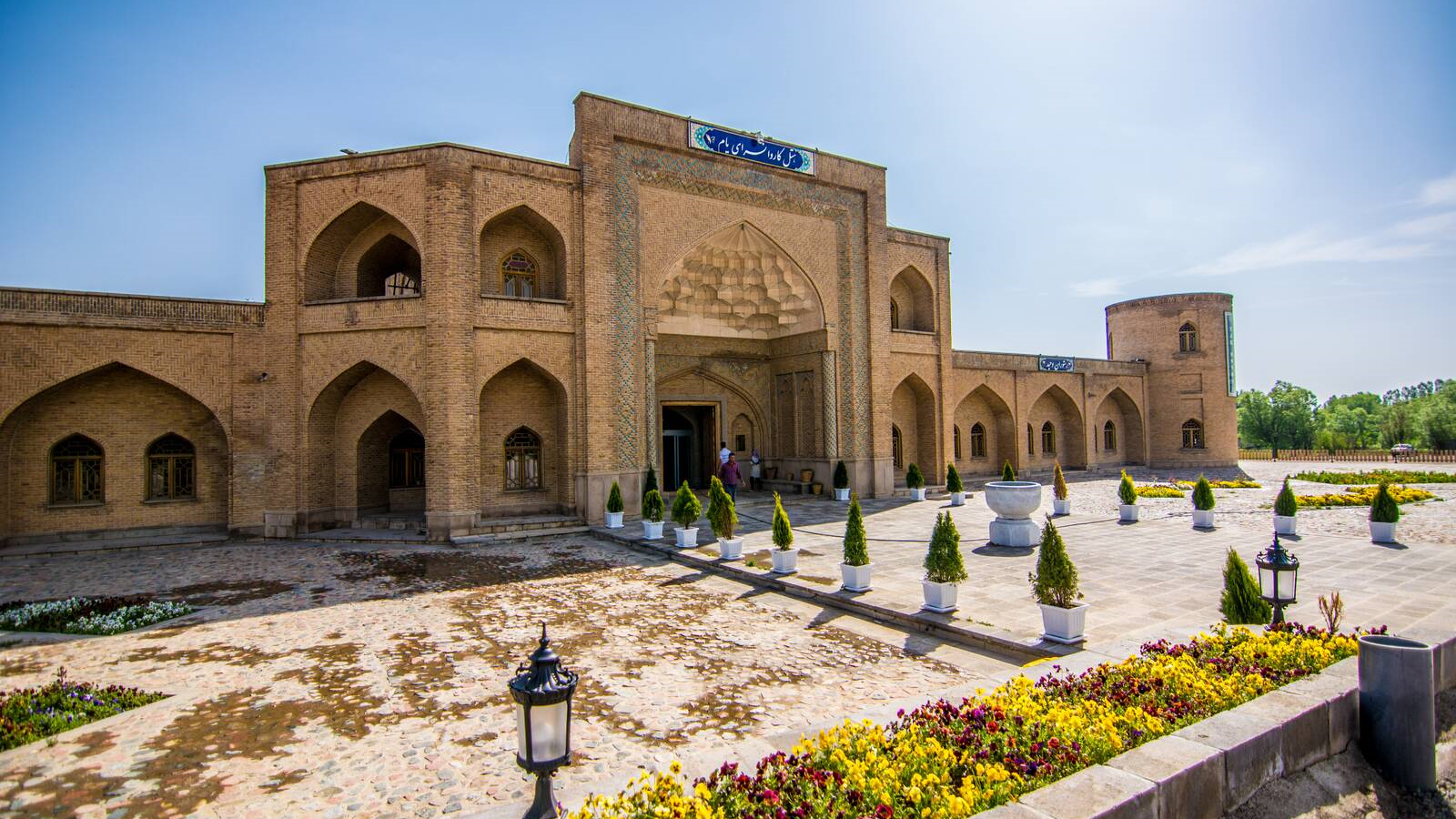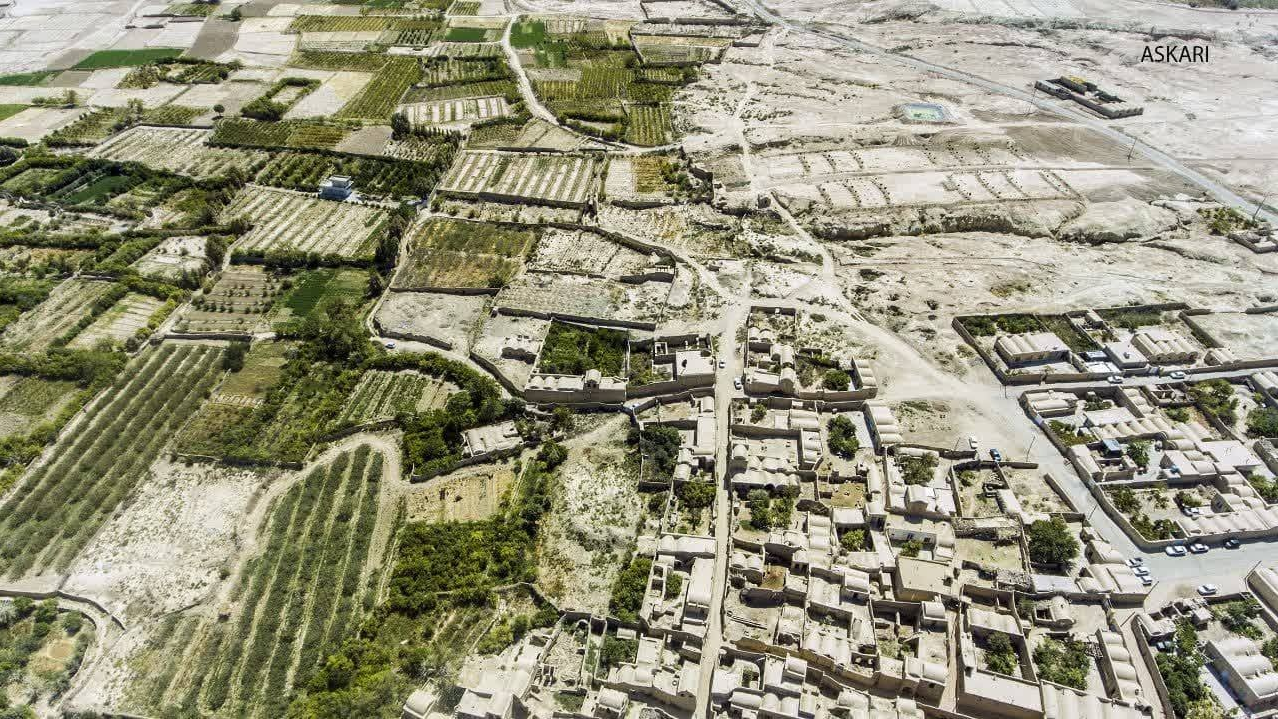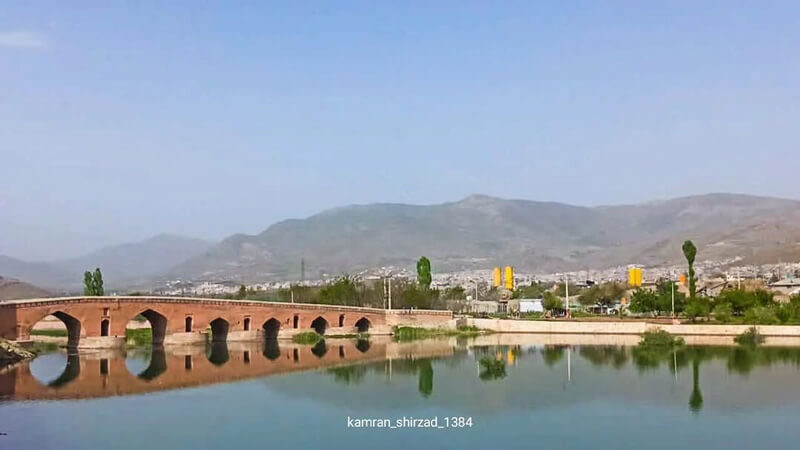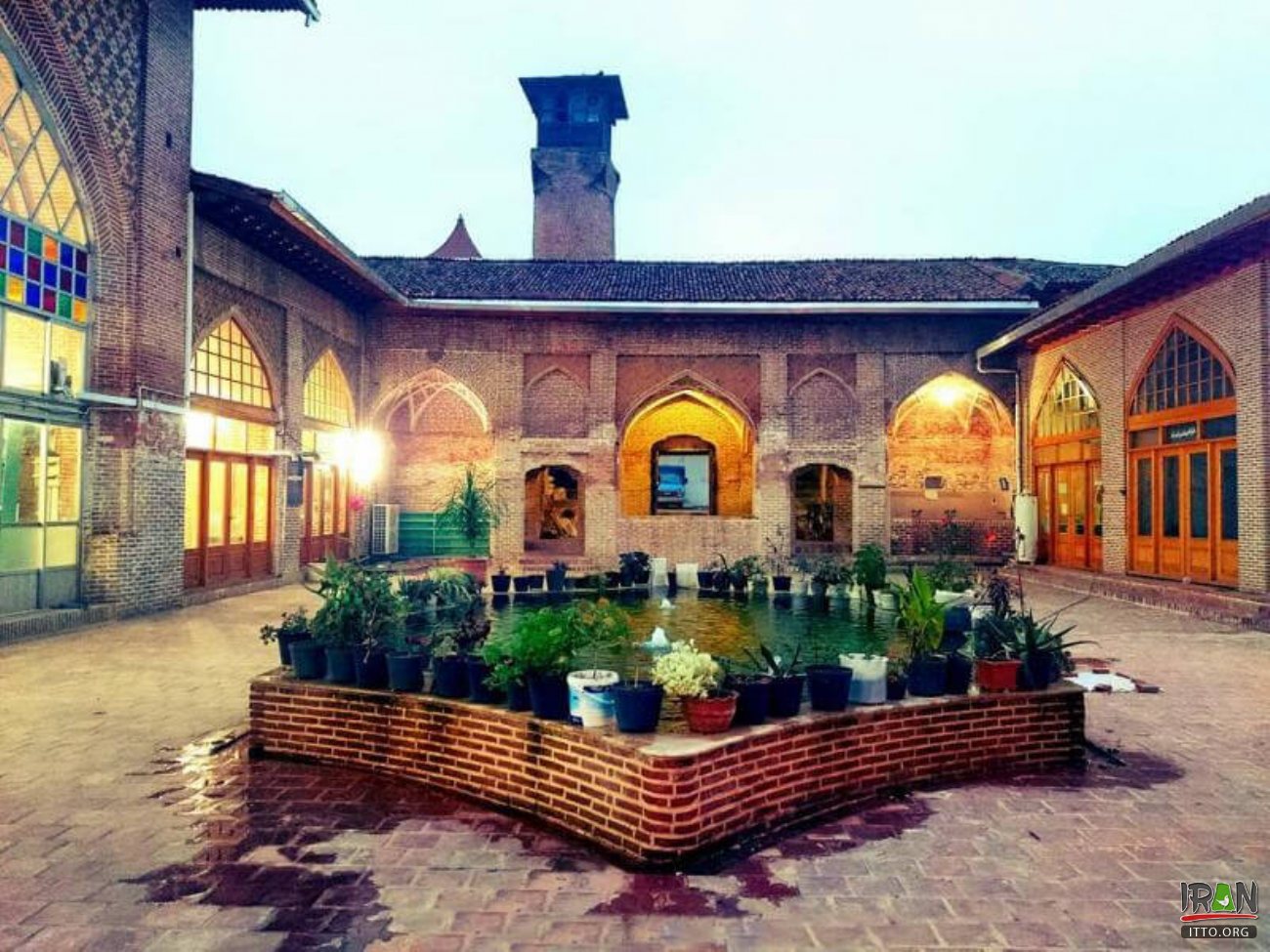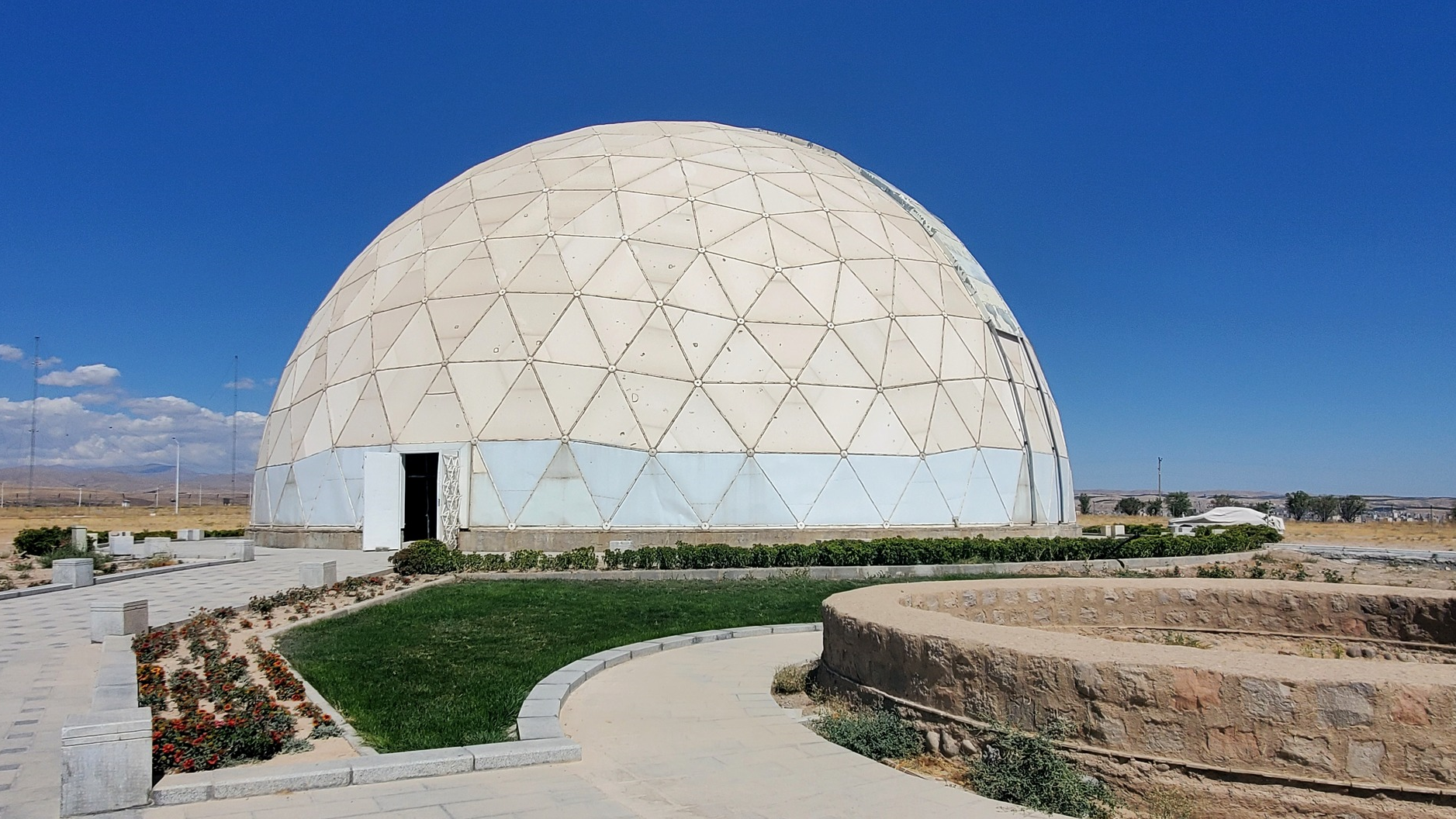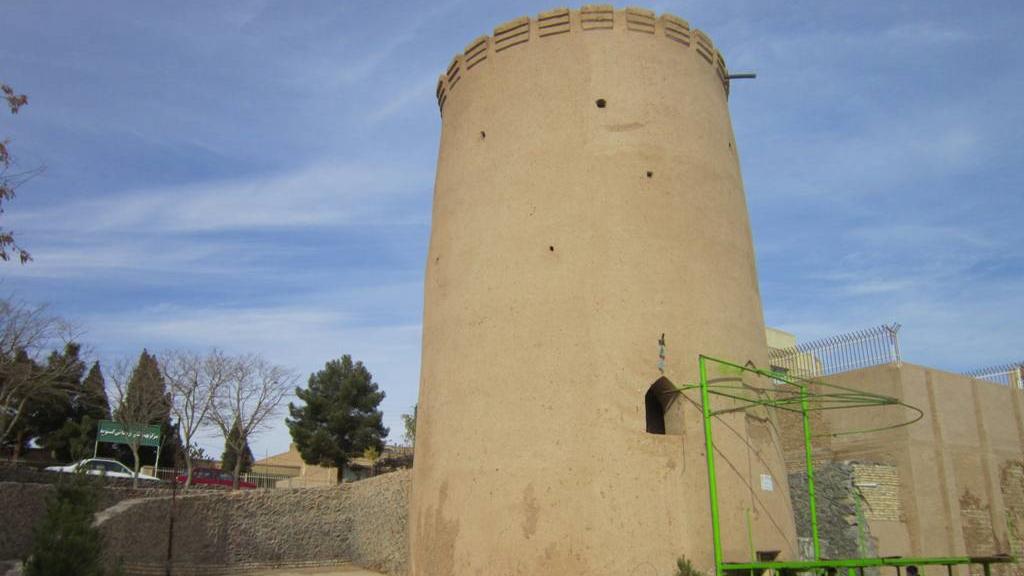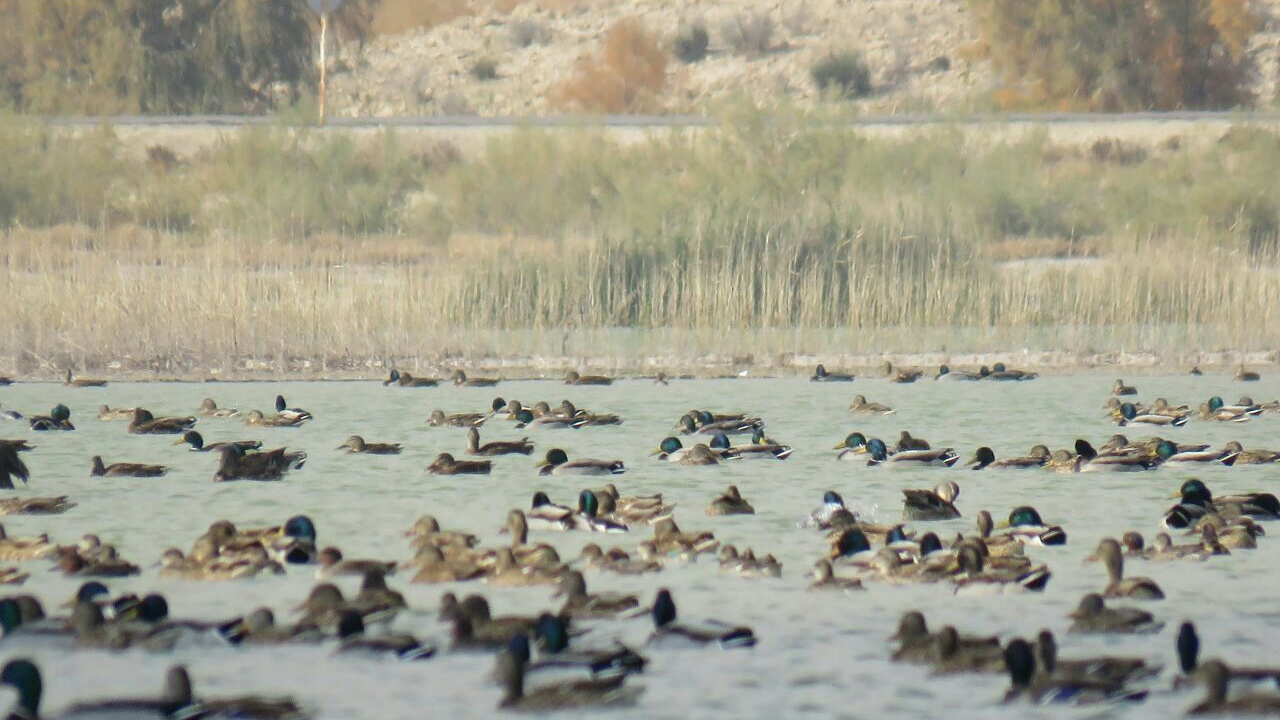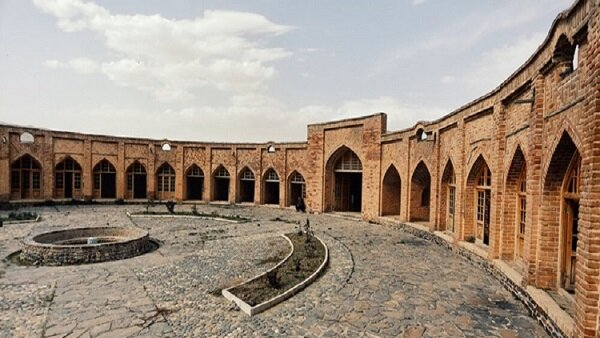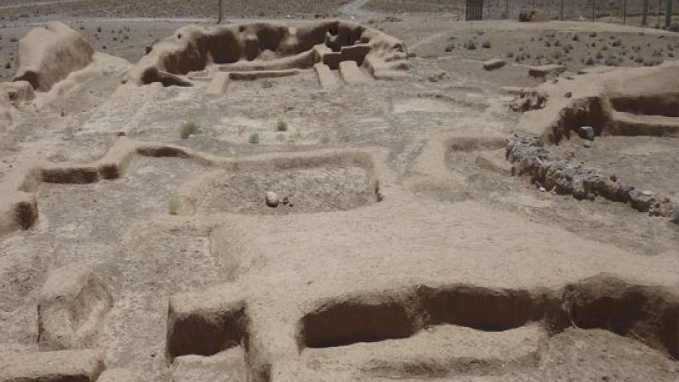
Mehraneh Rud Bridges
After entering Tabriz, the Basmenj Chay River divides into two branches: the northern branch, is called Esberiz, and the southern branch is called Quri Chay. These two parts then join each other in the Stone Bridge area and form the “Mehraneh River”. By passing through the city of Tabriz, the Mehraneh River gives it vitality and life. This river flows from east to west and divides Tabriz into northern and southern halves. Mehraneh Rud joins Aji Chay at the end of its route.
This river has been devoid of permanent water in the last few decades and it only flows in the rainy season. Certain plans are, however, being implemented for the permanent flow of water on the bed of this river. Several old bridges had been built on the rivers of Tabriz to facilitate communication between the two sides of the city some of which are of historical value and are part of the cultural heritage of the city.
Aji Chay Bridge
An old bridge with a length of 105 meters was built over the Aji Chay River in the Safavid era (16th century AD). The bridge was restored during the Qajar period, when Abbas Mirza, the crown prince of Iran, lived in this city. The bridge has 16 spans and a width of over five meters. Aji Chay Bridge was inscribed on the list of Iran’s national heritage in the year 1999 AD.
Qari Bridge
Qari Bridge is a stone bridge. In Azari language “Qari” means “old woman”. It is said that the sponsor of this bridge was an old woman who allocated the money she had kept aside for the Hajj pilgrimage to build the bridge in order to facilitate the movement of people over the Mehraneh River. In some sources, this bridge is also referred to as the “Cheragh Bridge”. The reason for this nomenclature is that the first light poles of Tabriz were installed on this bridge during the Qajar era.
The location of the bridge in the middle of Tabriz City has made it one of the symbols of this city. The Qari Bridge connects the old neighborhoods of Sheshgelan and Shotorban to the city’s big bazaar. The bridge is 100 meters long and five meters wide. The eight arched openings (arches) of the bridge with a brick structure, along with its foundations and stone fences, create a pleasant sight. A narrow bridge was built in the west of the old bridge during the Pahlavi era to be used for pedestrians. Qari Bridge was inscribed on the list of Iran’s national heritage in the year in the year 2000.
Haji Azim Bridge
This bridge is located on the Mehraneh River. The construction of the bridge dates back to the Pahlavi era (20th century). Haji Azim Bridge was inscribed on the list of Iran’s national heritage in the year in the year 2006 as one of the old bridges of Tabriz.
Stone Bridge
The Stone Bridge is one of the old bridges of Tabriz, which is located in the “Sheshgelan” neighborhood and at the junction of the Esberiz and Quri Chay rivers. The Stone Bridge is located in the northeast of the old city of Tabriz and in the middle of today’s Tabriz. There is an inscription located on the base of the bridge, on which the date of its construction is mentioned as 1363 AH (1944 AD). Of course, the original structure of the bridge is older and this inscription shows the date of the restoration of the bridge. Stone Bridge was the place where the supporters of constitutionalism confronted the royal forces during the struggles of the people of Tabriz in the constitutional movement (19th century).
Just as the name implies, the main material used for the construction of the bridge was stone; although bricks were used in the inner parts of the five arches of the bridge. The bridge is 44 meters long and 680 cm wide. The use of mortar, which has a special place in old Iranian architecture, is one of the strength factors of the bridge. This structure was inscribed on the list of Iran’s national heritage in the year in the year 2015. In recent years, some sort of lighting has been implemented on the stone bridge, which makes its view very enjoyable to watch at night.
The house of Parvin E’tesami, one of the greatest contemporary female poets of Iran, is located near the Stone Bridge. Also, there is a mosque with the same name (Stone Bridge) next to the bridge, which also dates back to the Qajar era. The pillars of the mosque are made of stone and bricks are used in the construction of its walls.
Bilankuh Bridge
The Bilankuh stone bridge was built over the Esberiz River during the Qajar era. There were many gardens around this bridge in the past, of which only three thick trees are left. Bilankuh Bridge was inscribed on the list of Iran’s national heritage in the year in the year 2005.
| Name | Mehraneh Rud Bridges |
| Country | Iran |
| State | East Azerbaijan |
| City | Tabriz |
| Type | Historical |
| Registration | No registration |
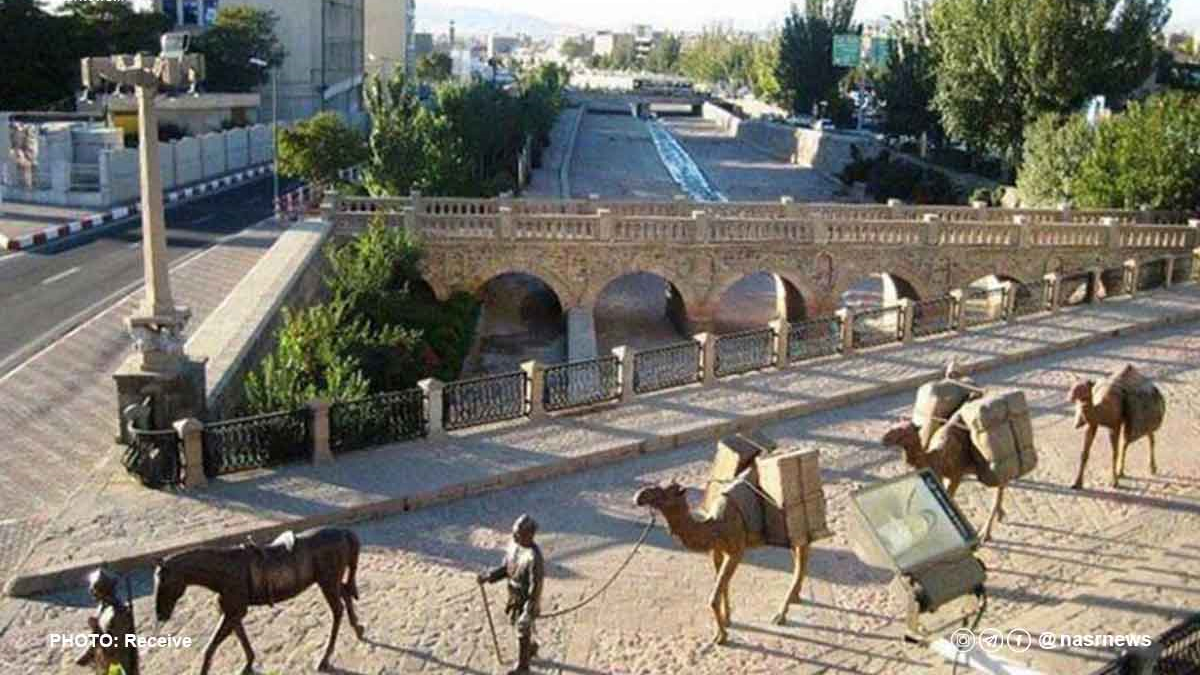

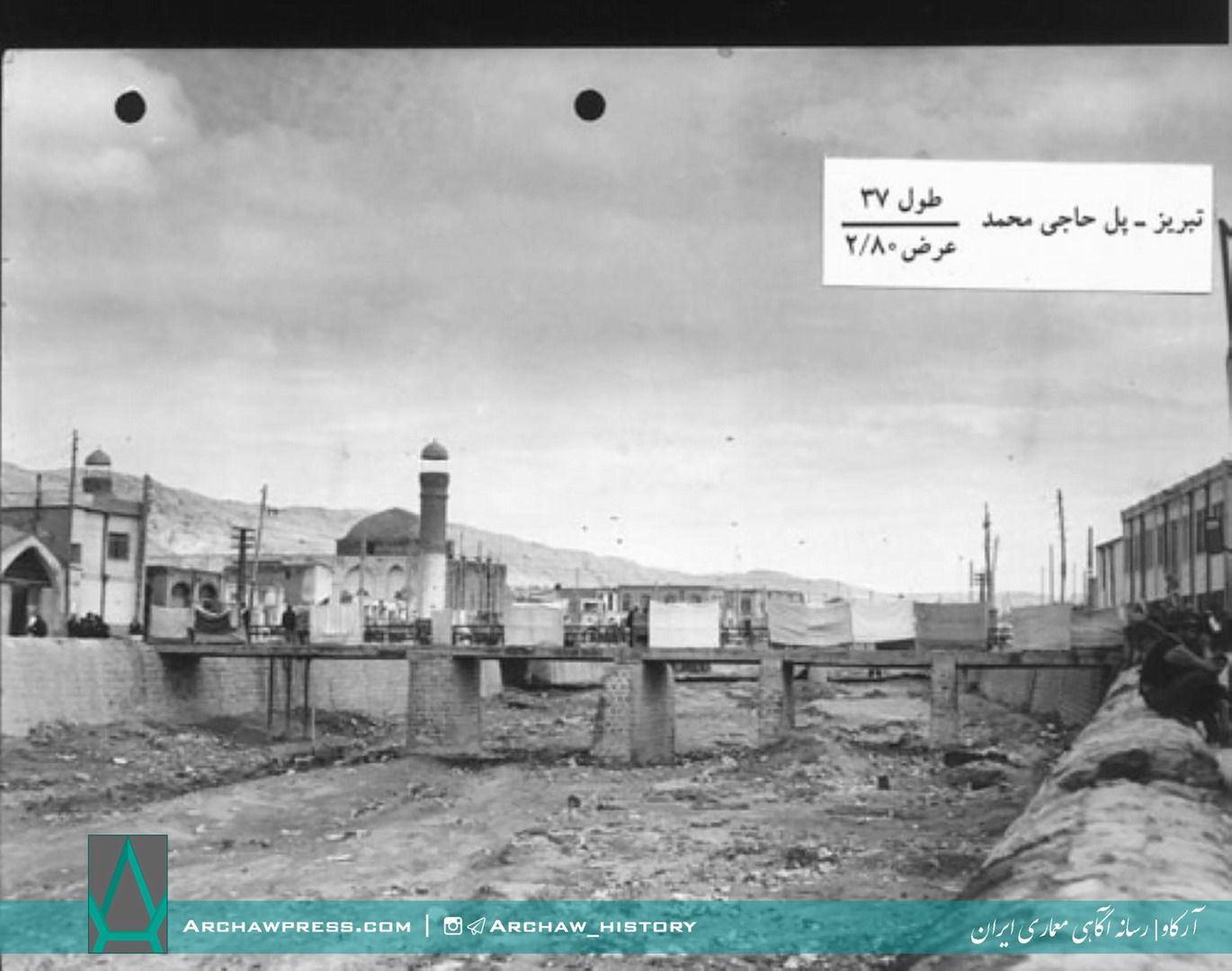
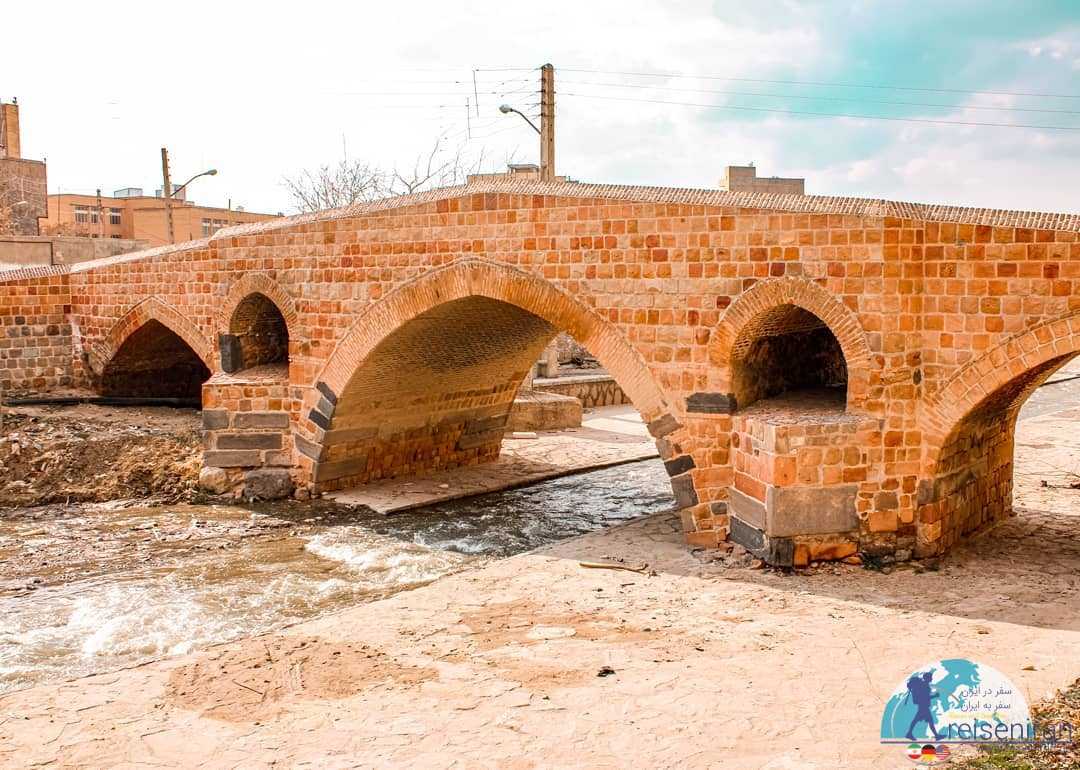






Choose blindless
Red blindless Green blindless Blue blindless Red hard to see Green hard to see Blue hard to see Monochrome Special MonochromeFont size change:
Change word spacing:
Change line height:
Change mouse type:

